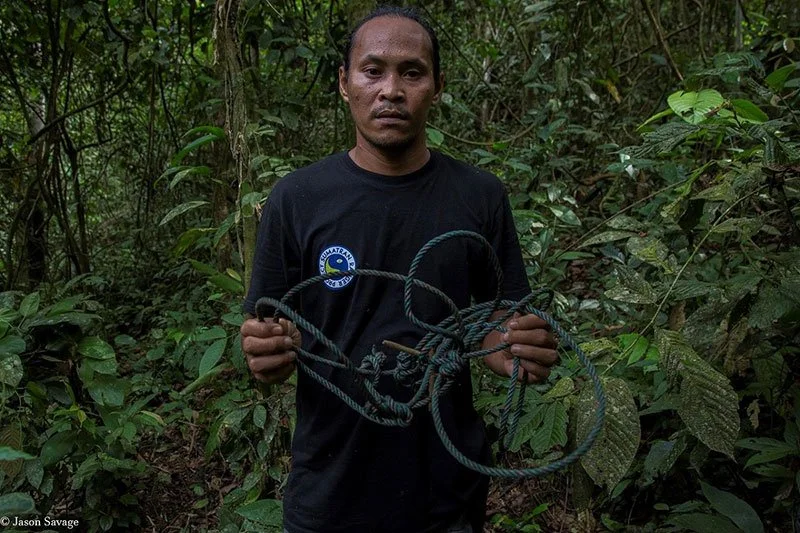Root & Ritual Conservation
At Root & Ritual, healing doesn’t end with us — it extends to the land, waters, and creatures who share this Earth with us.
Just as we tend to our nervous systems and bodies, we are also called to tend to the living world around us.
Each month, we spotlight a species whose story calls for attention, respect, and care. You’ll learn about their natural history, the challenges they face, and the conservation efforts working to protect them.
✨ This month’s featured species: Sumatran Tiger✨
Species Overview
The Sumatran tiger (Panthera tigris sumatrae) is the smallest surviving subspecies of tiger and is found only on the Indonesian island of Sumatra. Adult males typically weigh 100–140 kg (220–310 lbs), while females are slightly smaller at 75–110 kg (165–240 lbs). They are recognizable by their darker orange coats and closely spaced stripes, which provide camouflage in dense tropical forests.
As of 2024, the wild population is estimated at fewer than 400 individuals, earning the species a Critically Endangered classification on the IUCN Red List.
Native Range & Habitat
Geographic Range: Endemic to Sumatra, Indonesia
Habitat: Tropical lowland forests, peat swamps, and mountainous terrain up to 3,200 meters
Ecological Role: Apex predator regulating prey species such as wild boar and deer, thereby maintaining forest balance
Conservation Concerns
Habitat Loss
Sumatra has one of the highest rates of deforestation in the world.
Primary driver: expansion of palm oil plantations, illegal logging, and agricultural clearing.
Tigers now occupy fragmented forest patches, restricting their range and gene flow.
Poaching & Illegal Trade
Tigers are killed for skins, bones, teeth, and claws, which are trafficked for luxury goods and traditional medicine.
Poaching not only reduces numbers directly but also destabilizes ecosystems.
Human-Wildlife Conflict
Encroachment into tiger habitat increases encounters between tigers and villagers.
Retaliatory killings occur when tigers prey on livestock or threaten communities.
Conservation Status
IUCN Red List: Critically Endangered (since 2008)
CITES Listing: Appendix I (international trade is prohibited)
Estimated Population: ~350–400 individuals in the wild
Protected Areas: Found in national parks such as Gunung Leuser, Kerinci Seblat, and Bukit Barisan Selatan, though threats persist even within protected zones
Why They Matter
The Sumatran tiger is a keystone species. Its survival indicates the health of entire ecosystems. Protecting tiger habitat also safeguards carbon-rich forests critical for combating climate change and preserves biodiversity that sustains local communities.
How We Can Help
Support habitat conservation: Choose products certified by the Roundtable on Sustainable Palm Oil (RSPO) or avoid palm oil where possible.
Fund conservation programs: Donations support anti-poaching patrols, community education, and habitat restoration.
Raise awareness: Share the story of the Sumatran tiger to inspire collective action.
This month, Root & Ritual is supporting the work of International Tiger Project’s Sumatran Ranger Project!
“The Sumatran Ranger Project (SRP) is a community conservation initiative whose vision is to ensure the long-term protection of the buffer zone of the Leuser Ecosystem in North Sumatra. Their mission is to halt activities that damage the buffer zone and are a threat to wildlife, and to assist forest edge communities living within the buffer zone.
The Leuser Ecosystem is one of the world’s richest forest areas where Sumatran elephants, tigers, orangutans, and rhinoceros co-exist. SRP employs a team of local people to patrol several, forest edge or buffer zone communities in the Leuser Ecosystem to collect data, conduct surveys, remove snares, provide wildlife conflict assistance, and provide educational outreach. Snare removal is a vital part of the SRP patrols since these can cause devastating injuries and death to tigers. The project has a strong focus on empowering local communities to identify sustainable alternative income solutions, to help reduce their reliance on harmful activities such as poaching and the palm oil industry.
Tigers are monitored and identified via camera traps set up by SRP in the area. The SRP ranger team regularly find signs of Sumatran tigers on camera traps and on patrol outside the Gunung Leuser National Park, in very close proximity to forest edge communities. This proximity often leads to human-tiger conflict. Sumatran tigers have killed livestock in these areas and at times, local farmers have set up snares in retaliation. To reduce human-tiger conflict, the SRP team works with local farmers to drive tigers back into the forest using non-lethal means. They also work closely with the community to provide school supplies and develop alternative income opportunities, along with education on how to reduce livestock loss to predators. The presence of the SRP team in forest edge communities is a key way we’re seeking to conserve the small but vital population of Sumatran tigers in this landscape.”
Other Resources
Fig 1. Akron Zoo
Support Wildlife
100% of donations go to the featured program!




